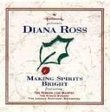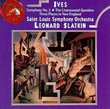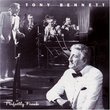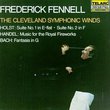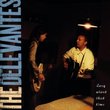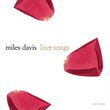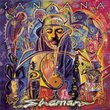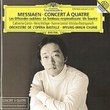| All Artists: Johann Ernst Altenburg, Heinrich Ignaz Franz von Biber, Georg Philipp Telemann, Giuseppe Torelli, Antonio Vivaldi, Gerard Schwarz, New York Trumpet Ensemble, Strings of the Y Chamber Symphony Title: The Sound of Trumpets Members Wishing: 1 Total Copies: 0 Label: Delos Records Release Date: 5/22/1992 Genres: Jazz, Classical Styles: Chamber Music, Forms & Genres, Concertos, Historical Periods, Baroque (c.1600-1750), Classical (c.1770-1830) Number of Discs: 1 SwapaCD Credits: 1 UPC: 013491300221 |
Search - Johann Ernst Altenburg, Heinrich Ignaz Franz von Biber, Georg Philipp Telemann :: The Sound of Trumpets
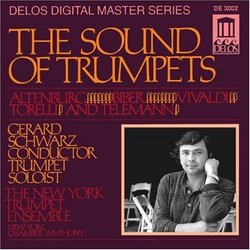 | Johann Ernst Altenburg, Heinrich Ignaz Franz von Biber, Georg Philipp Telemann The Sound of Trumpets Genres: Jazz, Classical
Since Antiquity trumpets have conveyed magical strength, nobility and authority; and their multi-purpose use over the centuries has ranged from the military to the spiritual. During the High Baroque, trumpet playing reache... more » |
Larger Image |
CD DetailsSynopsis
Album Description Since Antiquity trumpets have conveyed magical strength, nobility and authority; and their multi-purpose use over the centuries has ranged from the military to the spiritual. During the High Baroque, trumpet playing reached a pinnacle of musical refinement and virtuosic skill. Outstanding trumpeters, celebrated throughout Europe, inspired a golden performance age which produced compositions of a brilliance to match the performers' virtuosity. It seems appropriate that the revolution in digital sound should be given a fanfare from such a glorious past. On this recording we present five works which span that fascinating age and represent some of the finest German and Italian music ever written for clarino trumpet.Baroque trumpets were natural instruments -- valveless metal tubes approximately eight feet long, either straight or coiled into a loop, with cylindrical bores and flared bells. They were capable of producing only one note, the fundamental, although overtones could be obtained by changing lip tension at the mouthpiece. To achieve a complete diatonic scale, trumpeters were forced to play in the top, or clarino, register, sometimes up as high as the eighteenth overtone. Bores were made narrower to facilitate technique, and as a result the natural trumpet, unlike the modern valve trumpet, had a soft, flute-like tone. Composition for these instruments presented grave difficulties, since they could not move harmonically very far from their fundamental pitch. Intonation was often insecure, and melodic limitations loomed in all but the upper register. As musical styles began to change in the mid-18th century, clarino playing became passé and began to decline. In the aftermath of the French Revolution many of Europe's smaller courts and consequently private trumpet corps, were swept away and inventors began experimenting to find a more practical instrument. And finally with the 1813 development of the valve trumpet, the once highly-prized clarino techniques were lost.From the classical era until recent years much of the music written for the natural trumpet was considered unplayable. However, the brilliant trumpet virtuosi of our time have developed the techniques and stylistic command to allow this music once again to dazzle and delight the listener. Similarly Requested CDs
|
CD ReviewsThe Best Trumpet Ensemble Ever Emmett Anglin | South Carolina | 07/30/2005 (5 out of 5 stars) "I am an avid amateur trumpet player and own around 100 trumpet albums. There are not many recordings of some of these works available except on this CD and the performances are, for me, the definitive performances of these magnificent baroque master pieces. This CD is the best trumpet ensemble album I've ever heard and I've been listening to these things for 30 years. Even though the album is a reissue of an earlier vinyl LP the sparkling sounds of the strings and trumpets is undiminished. The performances are all first rate. Not only do the performers play all the pieces in their original keys (the Altenburg in D!)but the baroque ornamentation on the Vivaldi is like nothing I've heard before! It is wonderful. Of interest to the trumpet player will be the fact that the type of trumpet used to play each piece is listed. For instance they do the Vivaldi on Schilke G piccolo trumpets. Get it before it goes out of print. Emmett Anglin (...)" Astonishing Raphael Rosen | 11/03/2005 (5 out of 5 stars) "I play the trumpet, and own many trumpet CD's, and this one by far is the most astonishing, and amazing. I highly, highly recommend it." Brilliant Trumpet Music--Short but Sweet! James Yelvington | USA | 05/15/2010 (5 out of 5 stars) "This is a delightful disk of music not heard all that often--at least not by the general listening public--and not often heard performed at such a high level. Though the sound of trumpets may not be everybody's special delight, it is hard to see how any classical music-lover would fail to enjoy the sparkling, upbeat tone of this music and the brilliance of its performance.
Gerard Schwarz, a virtuosic, imaginative, and artistically gifted trumpet player (who has subsequently given up his career of performance in order to take on the challenges of conducting), assembled this talented and enthusiastic group of trumpeters along with other instrumentalists to bring to life five excellent examples of Baroque music featuring the instrument in varying numbers and musical contexts, from the sweet tuneful Biber sonata with 8 trumpets, bassoon and harpsichord continuo, and occasional percussion to the masterful Telemann concerto with solo trumpet, string ensemble, and continuo. The variety of compositional style, instrumental grouping, and musical context and motifs keep any hint of boredom at bay as we listen and succumb to the charms of this voice now regal, now songful, now elegiac. The composers date from about the mid-17th century to the late 18th, with Biber (1644-1704) being the oldest and Altenburg (1734-1801) coming nearly a century later. (Thus we can trace the story of trumpet music from early days to full development.) They are all pretty well known to classical music listeners--with the possible exception of Altenburg--and their compositional talents are well established. Their geographic locales are Germanic, from Hamburg in the north to Salzburg, Austria, in the south, or Italian, from Venice to Bologna, in the north. The musical liner notes by Mary Lou Humphrey are good, offering interesting background on each piece and its composer. In addition there is a good bio of Mr. Schwarz, and a technical description of the recording process written by chief engineer Stan Ricker. The recording was made in the Masonic Temple Auditorium in New York City on March 15-16, 1979 using the highest quality equipment and digital recording techniques then available (Soundstream, 50kHz sampling rate, later reduced to 44.1kHz for the CD by the Studer SFC-16 sampling rate converter). By today's standards the disk is a bit skimpy on musical quantity, at about 34 minutes total time. But recall that it was made at a time when most all recorded classical music was heard from long-playing vinyl records, whose total length was not much more than that. The only quibble I have with this recording (DELOS D/CD 3002) is in the program listing printed on the back and on the first inner page of the booklet. There we find some confusing errors, from track numbering to the description of the music. Specifically, the Altenburg concerto listed as occupying tracks 1-3 is actually totally contained on track 1. That makes the track numbering of all subsequent pieces incorrect by two, and the total number of tracks on the disk 13 instead of 15. Also, the key of the Torelli Sonata a cinque, which actually begins on track 6--not 8--is D Major, not G Major as printed. (Too bad if you have absolute pitch!) To help clarify matters, I offer the correct list of contents and tracks: Altenburg: Concerto in D Major 01 - Allegro; Andante; Vivace Vivaldi: Concerto in C Major 02 - Allegro 03 - Largo 04 - Allegro 05 - Biber: Sonata "Scti Polycarpi" in C Major Torelli: Sonata a cinque No. 1 in D Major 06 - Andante 07 - Allegro 08 - Grave 09 - Allegro Telemann: Concerto in D Major 10 - Adagio 11 - Allegro 12 - Grave 13 - Allegro As to whether the pieces are played on genuine period instruments, we are not specifically told. In particular we aren't told whether these are valved instruments or natural trumpets. We are given the pitches and registers, which include C and D trumpets and G and A piccolo trumpets. The C and D trumpets are just 1 or 2 notes higher in pitch than today's standard Bb orchestral trumpet, while the piccolo trumpets are 5 or 6 notes higher. In addition to the pitch differences there are differences in bore and other construction details, which afford them distinctive sounds and performance characteristics. It is my belief that Mr. Schwarz is using a valved instrument in his solos, for it seems unlikely that his fast and intricate ornaments and smoothly slurred runs could be produced on a valveless trumpet. All in all, this is a choice bit of music well worth having in your collection. It will stand up to many, many playings and will provide countless moments of musical pleasure and edification. I recommend it highly. " |

 Track Listings (15) - Disc #1
Track Listings (15) - Disc #1
